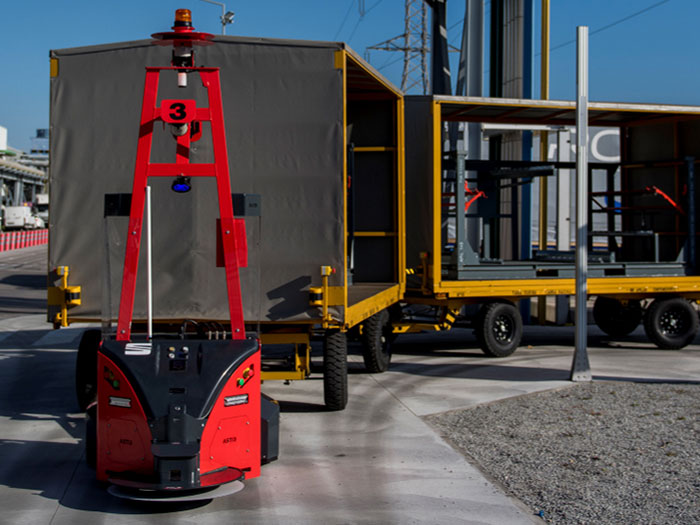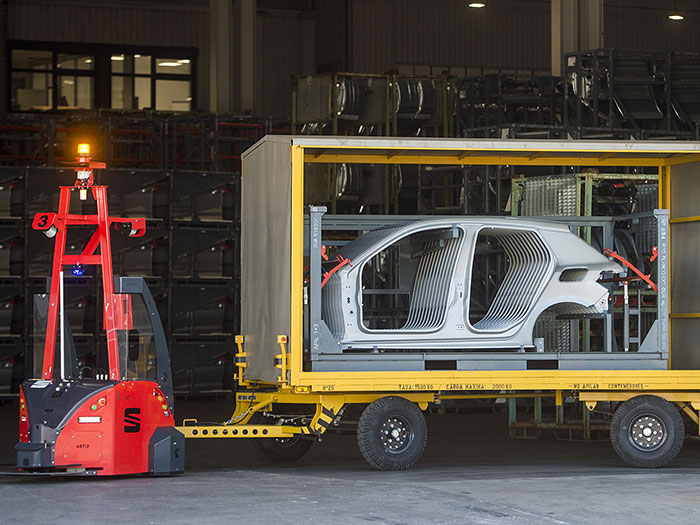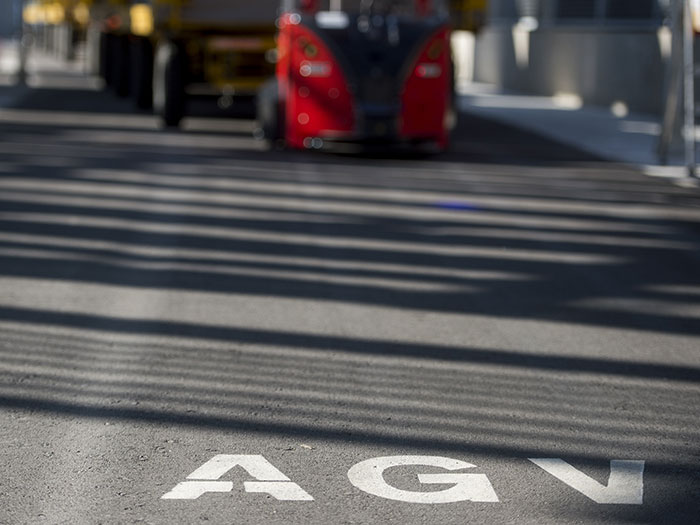SEAT implements first self-driven robots to automate outdoor parts transport
SEAT becomes the first company in Europe to use automated guided vehicles (AGVs) without magnetic guidance capable of moving outside the workshops. Featuring 4G connection and induction charging, they reduce CO2 by 1.5 tonnes per year.
The Spanish brand’s main plant in Martorell is making progress towards its goal of becoming a more sustainable, digitalised and smart factory. SEAT is the first industrial manufacturer in Europe to have outdoor, automated guided vehicles with SLAM navigation (simultaneous localisation and mapping), 4G connection and induction battery charging.
Eight AGVs are already operating outside the production workshops at the Martorell plant to automate the transport of parts. The new vehicles join the 200 AGVs that deliver parts inside the assembly workshops at the Martorell and Barcelona factories.
240 kilometres a day

Each outdoor AGV and its carriages make up a 25-metre convoy with a maximum transport capacity of 10 tonnes that can cover routes of up to 3.5 kilometres. Thanks to SLAM navigation, these vehicles are not guided by magnetic tape or wires. That means maintenance costs are reduced, they are more versatile to adapt to new routes and their installation does not require any dedicated infrastructure.
The eight AGVs travel a combined total of 240 kilometres a day. The vehicles currently use two routes between the press and metal shops to deliver parts such as hatches and doors, a move which does away with truck transport between the facilities.
Reducing emissions

The new AGVs, part of a project developed in collaboration with ASTI Mobile Robotics and Telefónica, also enable a reduction of 1.5 tonnes of CO2 emissions per year, since these deliveries were previously made using a truck and a tractor powered by fossil fuel. In addition, the use of AGVs makes deliveries more efficient and cost-effective, and reduces stockpiling of parts at both the starting and ending points of the route as well as traffic inside the factory.
“In recent years SEAT has been introducing pioneering innovations in the field of logistics,” said SEAT Vice-president for Production and Logistics Dr. Christian Vollmer. “It is a further example of our commitment to becoming a benchmark for Industry 4.0. Implementing new outdoor AGVs enables us to optimise production and logistics processes in an efficient, sustainable and connected way”.
Smart factory

With this project, SEAT is improving efficiency and making further progress towards its goal of making the Martorell plant a smarter factory through the Internet of Things in industrial environments where process automation and digitalisation is key.
In recent years, SEAT has applied technological innovations to its entire production cycle, such as the AGVs themselves, which are integrated in the production line. Other examples include the use of drones for urgent parts delivery and collaborative robots which, combined with more efficient data management thanks to the use of artificial intelligence, big data and blockchain, enable more efficient, flexible and agile processes.
All of these Industry 4.0 innovations coexist with the Martorell factory’s 7,900 workers, who currently turn out 2,300 vehicles daily.
Source: SEAT S.A.
